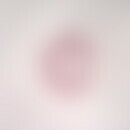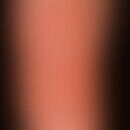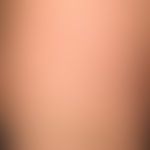Synonym(s)
DefinitionThis section has been translated automatically.
Urtica or wheal is defined as a transient elevation of the skin, with a smooth non-scaling surface. Its extent can range from 0.2-10.0 cm (or larger). The color of urtica varies from white to pale red to bright red, depending on the particular phase of development. Urticae may be surrounded by a red or even white halo. They are caused by dermal edema, resulting in a beet-like, fleeting, and intensely itchy lesion.
General informationThis section has been translated automatically.
An Urtica can (rarely) occur in isolation. Mostly, however, it appears in the context of urticaria as an irregularly disseminated, exanthematic clinical picture. The urtica exists for 6 to 12 (maximum 24) hours, then completely disappears and reappears at another site within the context of urticaria. Urticae can flow together through appositional growth, resulting in large wheal areas. On the other hand, they can develop into ring shapes or polycyclic figures through central regression and simultaneous peripheral expansion.
Urticae can appear in practically any part of the body. However, their localization can be triggered by specific or unspecific frictional stimuli, so that an urtica is formed at the site of the acting stimulus. This pathogenetic principle gives rise to typical distribution patterns which, if well observed, can be diagnostic. The following factors can have a triggering effect:
- Pressure(pressure urticaria; urticarial dermographism)
- Vibrations (Vibratory Urticaria)
- Cold(cold urticaria)
- Sunlight(light urticaria)
- Heat(heat urticaria)
- Water(aquagene urticaria: especially at contact points with water)
- Contact poisons (chemical, vegetable, animal)
- Immunological contact triggering (primrose, oranges, strawberries, hay) Proteins (meat, fish) Protein allergy, drugs (antibiotics, polymyxin B).
You might also be interested in
EtiologyThis section has been translated automatically.
- Pathogenetically, the Urtica is based on an edema of the papillary (and reticular) dermis, caused by a temporarily increased permeability of the dermal vessels. The most important diagnostic feature and criterion for distinguishing urticarial papules from other types of papillary dermis is the life span of the urtica. The easiest way to determine the volatility of an urtica is to mark an efflorescence with a felt-tip pen and to observe its course (marking test).
- A urticarial papule (e.g. in case of urticarial vasculitis or an insect bite reaction) persists beyond this period. This is understandable as it is based on a cellular infiltrate.
Notice! There is only one disease pattern that is monomorphically characterized by the efflorescence type Urtica/Quaddel, the urticaria. Urtica/Quaddel is the only type of efflorescence that defines a clinical picture independent of the cause. The detection of an "urtica" is diagnostic for urticaria.
HistologyThis section has been translated automatically.
LiteratureThis section has been translated automatically.
- Altmeyer P (2007) Dermatological differential diagnosis. The way to clinical diagnosis. Springer Medicine Publishing House, Heidelberg
- Nast A, Griffiths CE, Hay R, Sterry W, Bolognia JL. The 2016 International League of Dermatological Societies' revised glossary for the description of cutaneous lesions. Br J Dermatol. 174:1351-1358.
Ochsendorf F et al (2017) Examination procedure and theory of efflorescence. Dermatologist 68: 229-242









